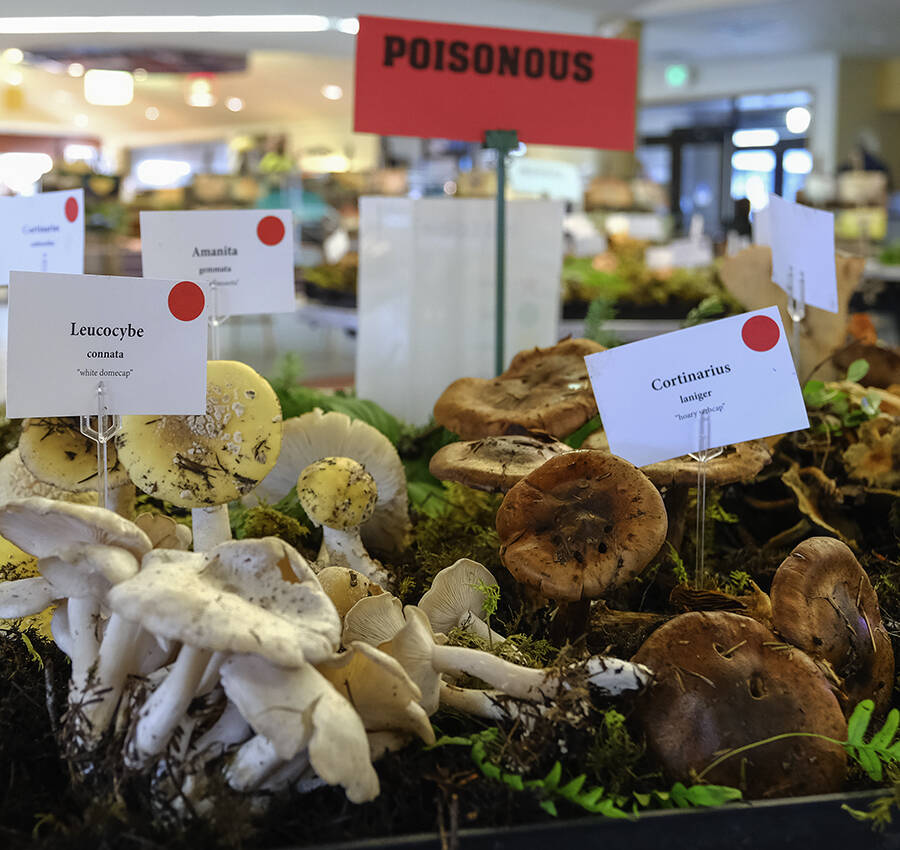Society’s desire to become more self-sufficient is mushrooming even in the area of fungis.
That was evident last weekend as 2,500 people turned out for the Kitsap Peninsula Mycological Society’s Annual Wild Mushroom Show at Olympic College in Bremerton. After low turnouts for a few years during the pandemic, attendance splurged last year to 1,500 and broke that record last weekend.
As to the event’s increasing popularity, society president David Ansley said the society has a very active social media presence, including vice president Aaron Hilliard’s YouTube Channel called “Mushroom Wonderland.” He also said there seems to be an increase in foraging, and self-sufficiency as a whole, in society.
One of the attendees, Andrea Gearllach, agreed. She expressed a desire to turn her own property into a “food forest,” thus improving the utility and value of the land. But some experienced attendees bemoaned the increase in popularity, saying over-harvesting has become a problem.
Ansley said members brought in nearly 2,000 locally collected mushrooms/fungi, which were evaluated by experts to identify and grade the submissions. It was the first step in an assembly line that turned the submissions into natural arrangements as they were placed on tables of related species for viewing.
Since foraging for mushrooms for food is a popular activity in the PNW, the society also arranged to introduce attendees to the potential culinary uses of mushrooms. This year, the offerings included chanterelles, matsutakes, cauliflower and hedgehog mushrooms. Olympic culinary students were led by Mark Regan. He developed the unique dishes, orchestrated the preparation of each one, instructed students in techniques during the preparation, and designed and directed the serving line.
The show had something for everyone with a connection to mushrooms. The college Rotunda hosted presentations on mushroom habitat identification and a presentation on the role of fungi in the ecosystem as a whole. For the younger crowd, Melany Khan, author of Mason Goes Mushrooming, taught children basic mushroom cooking, and presented a program for kids on how they can and should behave in order to assist their adults when foraging for mushrooms. Also, the society operated a mushroom growing station, where guests could build and learn how to cultivate an oyster mushroom farm to take home with them.
Ansley said the Pacific Northwest is a near-ideal climate for growing mushrooms, both in quantity and variety. The mix of rain, interspersed with dry periods and micro-climates caused by terrain, create a fantastic variety for fungi, he said. He urged anyone interested in learning more to explore KPMS, whose monthly meetings are open to all. For details go to kitsapmushrooms.org/



